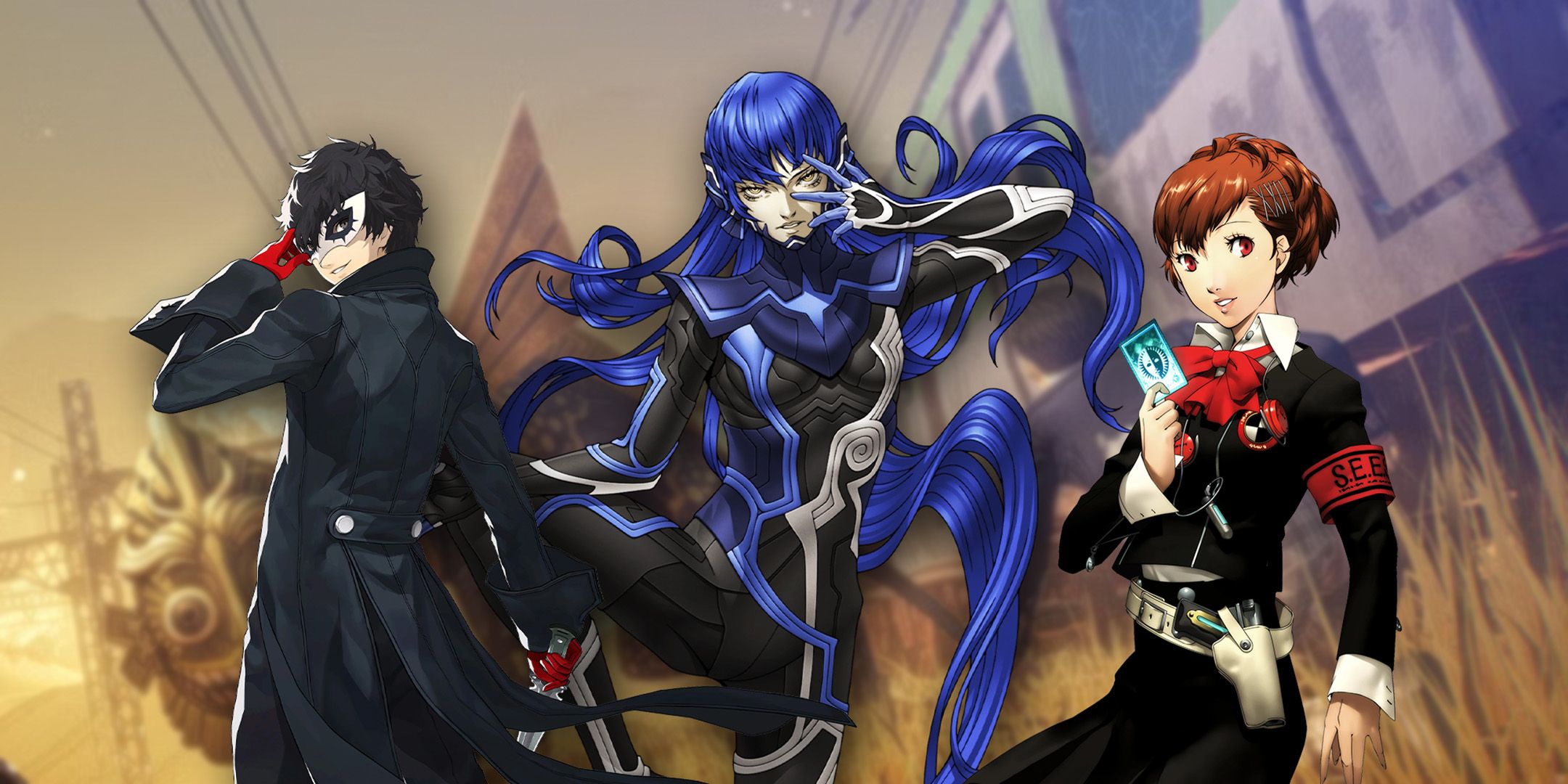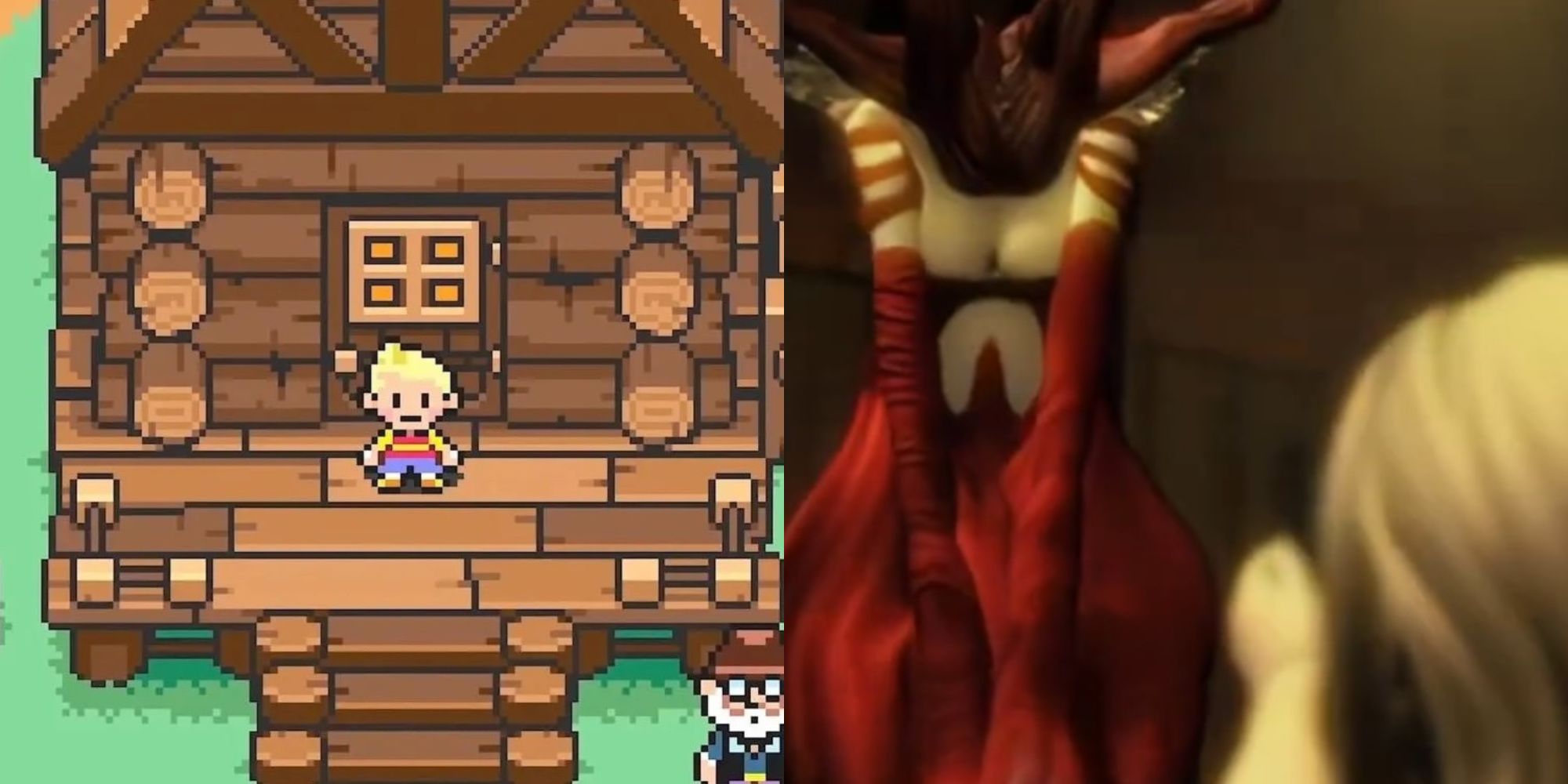Highlights
- The Megami Tensei franchise has a diverse collection of subseries, including Majin Tensei, Last Bible, and Devil Children, each offering unique gameplay experiences.
- Majin Tensei successfully combines strategy and Shin Megami Tensei elements, captivating both fans and new players alike.
- Devil Summoner's investigative gameplay and supernatural cases make it an engaging and challenging subseries within the franchise.
The Megami Tensei franchise has spawned a huge number of games, many of which fall under completely different subseries to the original titles. Since 1987, Shin Megami Tensei has captivated gamers, and the entire franchise now has a dedicated cult-following outside of Japan. It's not quite a household name, but that's often because many of the spin-offs and subseries disregard the overall Megami Tensai moniker while still adhering to the same RPG gameplay.

Best Megami Tensei Games (According To Metacritic)
Atlus's Shin Megami Tensei has been around for a long time and has produced plenty of great JRPGs. Which are the highest-rated on Metacritic?
This beloved franchise first started with the release of Digital Devil Story: Megami Tensei, and since then, it's been an absolute rollercoaster of a journey. Entries have ranged from mainline Shin Megami Tensei titles to far lesser known subseries such as Last Bible. There's also the small matter of the beloved spin-off franchise Persona, which has become even bigger than the overall Megami Tensei name. No matter what gamers are after, there's a bit of something for everyone here, especially for those who enjoy surreal takes on the RPG genre.
7 Majin Tensei
An Excellent Take On The Strategy Genre
Games Released |
|---|
|
Majin Tensei originally released on the Super Famicom, aiming to transition the Megami Tensei franchise into a number of strategy games. Surprisingly, the results were pretty good. Not only did the first title prove a success with Shin Megami Tensei fans, but it also garnered attention from strategy fans who had never experienced the franchise before. Whilst the first few titles proved quite influential, the latter two were released only on Japanese feature phones.
The only major criticism of the first title was that the gameplay took heavy inspiration from the Fire Emblem franchise, which can certainly be felt in the overall design and appearance. The first two titles were also somewhat limited in their visual presentation on the Super Famicom but provided an endearing art style. Majin Tensei was somewhat of a risk for developers Atlus, but it proved to be a decision that paid off well in the end. Unfortunately, none of the Majin Tensei games were released outside of Japan.
6 Last Bible
A Toned Down RPG Experience
Games Released |
|---|
|
The first title in this subseries released back in 1992 with the aim of appealing to a wider audience than just the mainline Shin Megami Tensei games. As a result, the Last Bible series was significantly more playful and toned down, with far lighter storylines and gameplay. Whilst this was a great thing for the overall franchise, ensuring it became more popular, many players missed the dark, philosophical appeal of the main series.

10 Video Game Spin-Offs That Were Better Than The Main Franchise
Almost every franchise has a spin-off of some sort. But sometimes, those alternatives become better than the main series.
In the Last Bible games, players explore the world in classic top-down RPG fashion and interact with various monsters. One such example of the toned-down atmosphere here is the fact that enemies were referred to as monsters instead of demons. Despite this, the Last Bible series featured some great RPGs that fans of the franchise hold very dearly. The strategy spin-off, Another Bible, was also released to positive reviews.
5 Devil Children
Pokemon-Esque Demon Catching Games
Games Released |
|---|
|
It was a bit random for the Megami Tensei franchise to take clear inspiration from Pokemon and head in a monster-catching direction. Luckily, it works extremely well, and in many ways, these titles actually surpass their inspiration in terms of gameplay quality.
There is far more to these games than what first meets the eye. From larger worlds to complex dialogue mechanics, these are genuinely some of the best monster-catching games to have been released. Filled with fantastic music, great visual styles, interesting characters, and engaging plotlines, there was little room for failure here - it's just bizarre that it works so well.
4 Devil Summoner
Investigating Demonic Cases Soaked In The Supernatural
Games Released |
|---|
|
The Devil Summoner subseries is one that has received a new title most recently and still continues to be a major success story with fans. This spin-off arrived after the positive reception to Shin Megami Tensei If..., which brought further exploration to the franchise. Devil Summoner picks up these pieces and turns them into a whole series of dungeon-exploring madness. It also contains some of the hardest entries in the franchise.
One of the main draws to this subseries is its focus on investigative game mechanics, where the majority of the games follow some sort of detective character working through various supernatural cases. And this all merges with the dungeon-crawling, action-packed gameplay that the Shin Megami Tensei franchise has become synonymous with. All in all, it's a pretty great subseries.
3 Original Series
The Entries That Started It All!
Games Released |
|---|
|
It wouldn't be right to disregard the games that started this iconic franchise. Sure, they're a little dated and clunky, but these are innovative RPGs that laid the foundation for what came next. These first titles always had great game design, intriguing environments, and excellent demonic enemies, expertly blending themes of horror with action-adventure exploration.

15 Turn-Based JRPGs With The Best Stories
Turn-based JRPGs are often known for their stories, and these fantastic games really shine in the storytelling department.
The stories were classic anime, high-school setups, but they were merged with a level of insanity that was never seen in games before. The characters felt real and genuine, and the environments were familiar. Even though some of the darker themes could be pretty disturbing, there was always a sense of comfort in the familiarity. It was also helped by the fact that these were just pure, unadulterated fun games.
2 Shin Megami Tensei
Influential RPGs That Became The Franchise's Flagship
Games Released |
|---|
|
As the franchise is now well known as Shin Megami Tensei, it's weird to think that the first game that was actually released as Shin Megami Tensei wasn't until 1992, and it was actually the third game in the franchise. This title was the game that made the franchise what fans know it as today. Players explore intricate RPG dungeons, whilst mixing elements of slice-of-life in between.
It introduced the element of being able to talk to demons and recruit them into the player's party, as well as the fusing of demons to make even stronger ones. It included deep, philosophical themes with mature and interesting characters. At the time of release, it was honestly like nothing else that had come out before and certainly contributed to showcasing what video games were capable of as a story-telling medium. Newer Shin Megami Tensei releases have always remained consistently excellent, and it's always a franchise to keep a close eye on when new titles release.
1 Persona
The Best-Selling RPGs With Dedicated Cult Followings
Games Released |
|---|
|
Where to start with Persona? It's probably worth mentioning that this subseries has swiftly become the series' most popular and most successful. Of course, it's got a lot of similarities to the mainline Shin Megami Tensei titles, but it manages to feel distinctly different at the same time. Players will encounter the same kinds of demons and strange corrupted worlds, but it never feels repetitive or too similar.
The Persona series is known for blending sequences of large RPG dungeons with laid back real-world, slice-of-life events. Players can build their friendships and have romances with other characters, usually in a high-school setting. Meanwhile, they're often the conquering heroes of some kind of corrupted "otherworld" environment, where they can utilize the powers of "Personas." It expertly blends elements of monster-catching, dungeon-crawling, and visual novel-style gameplay, and it features one of the best representations of the quotidian in gaming.

6 RPGs With Unique Monster Taming Mechanics
For these RPGs, fans must make friends with a few monsters.

